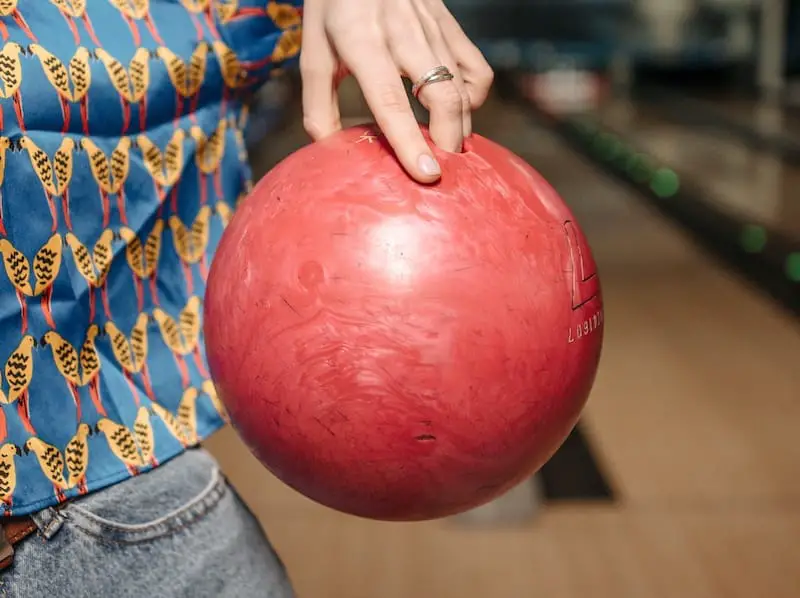Have you ever pondered, “how many bowling pins are there?” in each game of bowling? Whether you’re a seasoned bowler or simply intrigued by this popular sport, you might be surprised to learn that there are various styles of bowling, each with unique pin configurations and fascinating histories. We explore the diverse world of bowling, from the well-known ten-pin game to lesser-known variations like nine-pin, five-pin, candlepin, and duckpin bowling.
Key Takeaways
- Pin count and lane configurations vary between different bowling types, requiring specialized balls to optimize performance.
- Strikes and spares are rewarded with bonus points in ten-pin bowling, while alternative games have distinct point allocation systems.
- Bowling leagues and congresses promote the sport by organizing tournaments, setting regulations, and encouraging fair play.
Pin Count Across Bowling Variations
Bowling is an ancient sport that has evolved into numerous variations, each featuring its own distinct pin configurations. The most familiar type of bowling, ten-pin bowling, involves ten pins arranged in a triangular formation. Other bowling games include:
- Nine-pin bowling
- Candlepin bowling
- Duckpin bowling
- Five-pin bowling
Each of these games presents its own unique challenges and requires different strategies and skills.
We will examine these captivating variations and the unique pin arrangements that differentiate them.
The Standard Ten-Pin Setup
Ten-pin bowling is the most popular form of bowling around the world, especially in the US. Countries from all over the globe feature this game as a major source of entertainment. In this game, ten pins are arranged in a triangular formation referred to as a “pin rack”. The objective of ten-pin bowling is to knock down all ten pins in an effort to achieve a perfect score of 300. Each pin has a weight range of between 3 pounds 6 ounces and 3 pounds 10 ounces.
The first officially recognized 300 game was bowled by Ernest Fosberg in 1902. Since then, the sport has continued to grow in popularity, with significant milestones and records achieved by talented bowlers, such as Hannah Diem, the youngest American bowler to bowl a USBC-certified 300 game, and Elliot John Crosby, the youngest British bowler to bowl a BTBA-sanctioned 300 game.
Nine Pins in a Diamond
Nine-pin bowling is a team game that dates back to the early 19th century in Europe. Nine pins are arranged in a diamond formation in this variation. The center pin is red. Unlike ten-pin bowling, the pins in nine-pin are not re-set between each player, adding an element of teamwork and strategy to the game. Scoring in nine-pin bowling is unique as well. Each pin is worth one point, and a player is allotted two turns in a frame, even if they knock down all the pins on the first attempt.
In nine-pin bowling, if all pins are knocked down except for the red one, the player scores twelve points for their team. This adds an extra layer of challenge to the game, requiring players to carefully consider their shots and work together with their teammates to achieve the highest score possible.
Five-Pin’s V-Formation Challenge
Five-pin bowling, which originated in Canada, offers a refreshing twist on the traditional game. As its name suggests, the game features five pins arranged in a V formation. Each pin has a distinct point value, making the game more strategic and challenging than its ten-pin counterpart.
The pins used in five-pin bowling are smaller and lighter than the ten pin bowling pins used in ten-pin bowling, and they possess a rubber band around their middle, which amplifies the impact of the ball when hit, increasing the chances of taking down as many pins as possible. Players must carefully plan their shots and adjust their techniques to maximize points on each throw, considering the differences between a ten pin bowling ball and a five-pin bowling ball.
Candlepin’s Unique Pin Profile
Candlepin bowling, a variation that emerged in the United States in the late 19th century, is characterized by its long, slender pins and smaller ball. Unlike other bowling games, fallen pins remain in the lane during a frame, adding an extra level of difficulty to the game. Candlepin bowlers are given three attempts per frame rather than the standard two, further distinguishing the game from its counterparts.
The highest score ever achieved in a single game of Candlepin bowling was 245 out of 300, showcasing the unique challenges this game presents even for the most skilled players. The slender pins and smaller ball demand precision and accuracy from bowlers, making it an engaging and demanding variation of the sport.
Duckpin’s Shorter Set
Duckpin bowling, which originated in the United States in the early 20th century, uses ten shorter and lighter pins arranged in a triangle, similar to ten-pin bowling. The lighter ball used in duckpin bowling, which typically weighs approximately 3.75 pounds and does not feature finger holes, makes it easier to score spares and strikes.
The maximum sanctioned score in duckpin bowling is 279 out of 300, which demonstrates the unique challenges and strategies required in this variation of the sport. The shorter pins and lighter ball offer a fun and engaging alternative to conventional bowling games, appealing to players seeking a fresh challenge.
Understanding The Bowing Pin Arrangement
It may seem like understanding how many pins are in a set or how they are arranged would be trivial knowledge; however, it plays an essential role for bowlers’ success. Knowing how to correctly place each pin in its correct position can affect the game’s outcome significantly. Proper spacing and arrangements of pins can also protect those playing from injuries.
Understanding the history and common variations of bowling pins’ number and arrangement is vital to anyone with a love for the sport. Knowing how to properly set up the ten-pin formation is crucial for players’ success, and understanding the unique features that distinguish one brand from another can provide insights into improving one’s game.
Why Triangular? The Rationale Behind the Triangular Pin Formation
Historically speaking, the number and arrangement of bowling pins has gone through numerous changes throughout history. For instance, early versions involved knocking down an indefinite number or some other form like rolling balls at chickens or cats rather than knocking down a specific set arrangement like ten-pins today.
By the way, knocking down all 10 pins on your first shot is called a strike. Get e.g. three strikes in a row, you get a turkey.
Knowing how many bowling pins come in a set helps bowlers understand the necessary equipment they need to play this game. Understanding the variations of pin numbers for different types of bowling games and knowing the historical context behind the design of pins can help players to appreciate the evolution of this popular sport.
You know Duckpin bowling? Get strategy tips for Duckpin bowling here.
Importance of spacing between pins
The spacing between each pin is crucial in determining how easy or challenging it is to knock them down with one shot or multiple shots. The closer they are together, the easier it may be to knock them down with one shot if you hit them correctly. If they’re further apart, knocking all ten down with one shot may be more challenging but can be achieved with proper technique.
Final Thoughts
Now that we have explored how many bowling pins are in a set, variations for different types of games, we can appreciate the importance of these seemingly minute details in the sport of bowling. It is essential for bowlers to understand these aspects to improve their game. Knowing how many and how they are arranged helps bowlers adjust their aim and strategy, while knowledge of the anatomy and design can indicate which pins may be more likely to fall or what adjustments may need to be made when using different ball weights or lane conditions.


